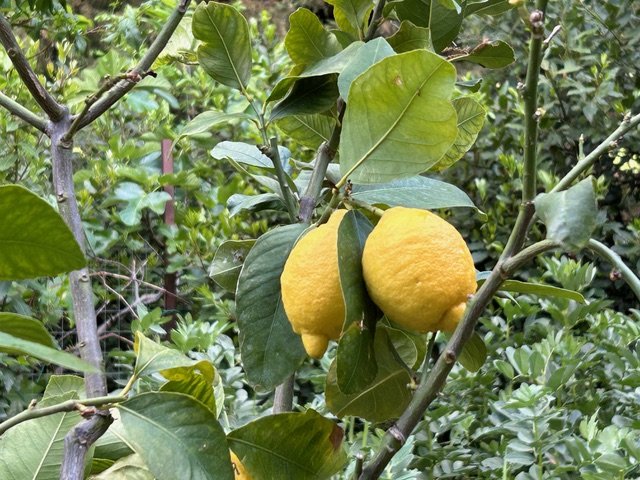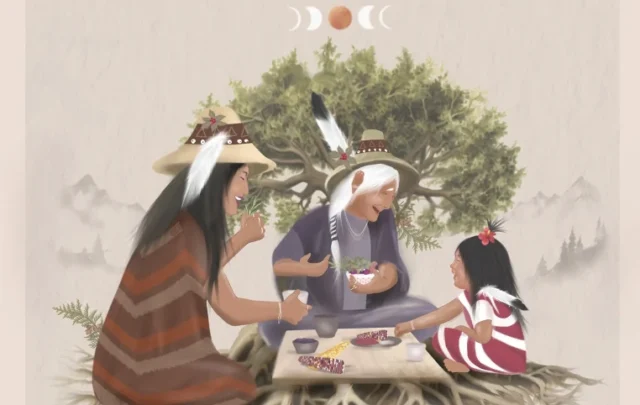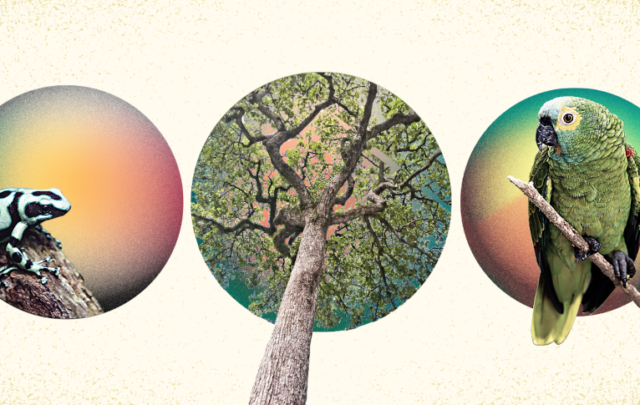Beauty can be a guide to all of us in the climate crisis. It can be a form of resistance against what is ugly, disordered, and destructive… Annilee Oppenheimer
I plant beauty.
Well, perhaps I’m taking too much credit. As a farmer, I simply encourage plants, giving them a place to thrive. The beauty and nutrition are already within them. Basically, I set the table, the guests arrive and they do all the work. I give the plants the space, fertile soil, room to breathe and expand. And then I step back. Nature always has the upper hand and it is really her exquisite designs: the textures, shapes, colors, nutrition which meander in, around and through all the gardens and fields and into the forest. She does the heavy lifting. She is the decorator leaving me to rearrange the furniture. The result is healthy, incredibly fresh food able to stand up to the radical changes in the weather while providing non-stop natural beauty.
When asked what I do I often answer that I grow food. I am always corrected by my Italian friends. No, you cultivate food, they explain. What is the difference, I ask? The plants do the growing. I nurture them… when its needed. This correction is most often said by farmers whose grandparents foraged our mountain during the world wars, finding everything they needed to survive. The mountain is a self-sustaining ecosystem. It is a source of comfort and beauty as well as providing food, shelter, firewood.
Nature is an artist as well as a chemist. All our food crops have their roots in her original blueprint. To farm with Mother Nature in charge is to live inside a year-round impressionist masterpiece. Alive and always changing. Superior to any museum exhibit.
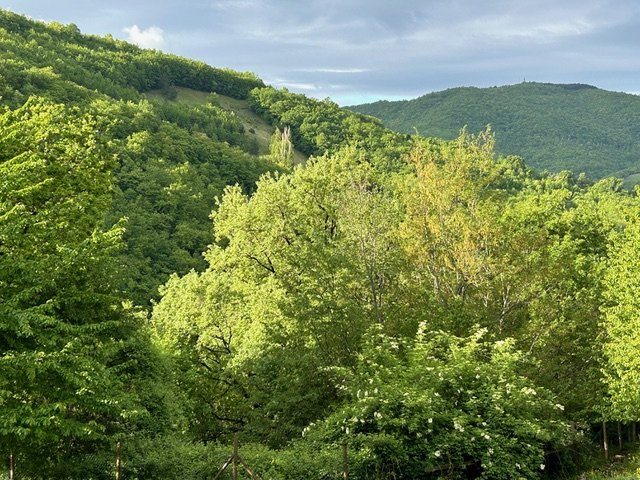
What is beauty? I looked up the definition… A quality or combination of qualities that gives pleasure to the mind or senses and is often associated with properties such as harmony of form or color, proportion, authenticity, and originality. Beauty calms the mind and delights the senses. It sounds frivolous perhaps to discuss the beauty of the natural world in a time of planetary crisis but it has been an effective way to help others see the manifold gifts as well as the intrinsic value of our wild areas. Beauty and pleasure are concepts which engage others, perhaps countering many of the stereotypes of farm work. My gardens, the woods and fields, the animals, the river bordering my property, even the mountain itself are illustrative of harmony and delight.
The farmer’s personal garden, the orto—a mix of fruit trees, vegetables, grape vines, and flowers—is always next to the house. For most of us, it’s right outside the kitchen door. We drink our morning cup of coffee in the garden, sit there for most meals, our children play there and it is there we have a glass of wine while the bats come out at night. It is the most visited room in our house. When the poppies and wild carrot seeds blew in and settled themselves among the potatoes and artichokes in the orto, I left them. They reproduce in larger numbers every spring and so far the fruit trees and herbs and vegetables all share the space and seem to thrive on the company. Poppies are joyful. They bloom continuously all spring. Soul food.

And I think that is the secret to the beauty as well as the immense productivity of the natural world—the sheer number of plants sharing the same area, so much diversity, so much green, as well as the burst of color. This is exactly what we find soothing, stabilizing, rejuvenating. For some perhaps, even spiritual. Being within all the lush growth, inside an expanse of green trees, feels like an embrace.
Why do we pay money to take a class in tree hugging or forest bathing in the woods but never in a field of corn?
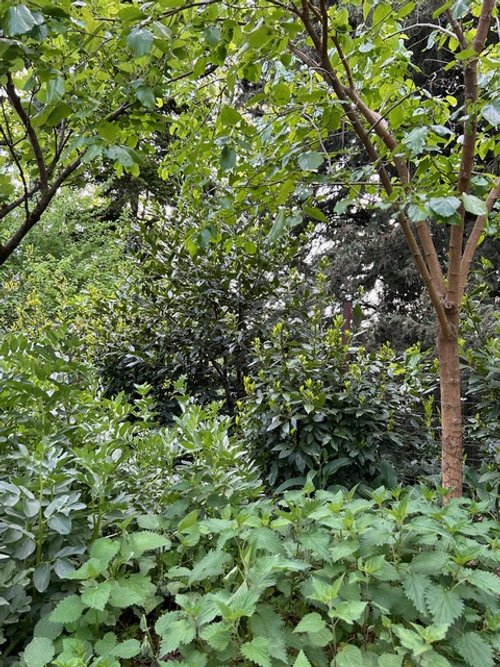
Plants do not line up in neat rows in the natural world. Nor does a tree live in isolation. On our entire farm there is only one lone tree, a walnut in our hay field. I suspect it was not always alone, that all its brethern were cut down for firewood. The natural inclination of trees—like people—is to all hang out together, keeping their kids close by dropping their seeds directly underneath. Plants exist in guilds; in groups of trees and understory shrubs, herbaceous plants, mosses, fungus… Yes, they share a liking for similar conditions but that would be too simplistic an explanation. They cooperate because they provide one another with the shade or the nutrients, the insect resistance or the moisture they would not have if they were flying solo. Trees are the essential ingredient. In the mountains, we are all farming on an incline. The trees hold the soil from erosion, capture and release water as needed, and participate in a complex nutrient exchange with their surrounding neighbors. They keep the immediate area cooler in the summer and serve as vital windbreaks.

The first time I drove out into these mountains, I knew that this was it. I passed through the north gates of the city in early spring and was gobsmacked as the entire countryside opened up. Wildness. (Above) Nature, using only a green palatte (with a smattering of violet) was giving a stellar exhibition. I was in awe. The landscape took my breath away. A riot of living green. Astounding beauty.
I wanted to be part of it all. I wanted to burrow in. Forever.
Infact, 12 kilometers down this road we found home. I began to see with fresh eyes, that farming in beauty changes everything. I gave up neat rows of one-of-a-kind crops and became a true believer in interplanting, putting plants together which repel one another’s pests or increase one another’s flavor and nutrition. It was both easier and more efficient to plant in guilds—communities of plants being more robust than a monoculture. The variety is part of the beauty but it is also a large part of the health of food, the health of the land. Much of the work I do hardly seems like work. Depending on my mood and my needs, it is therapy, exercise, or meditation. The work—with my hands and back and feet, anchors me in the present.
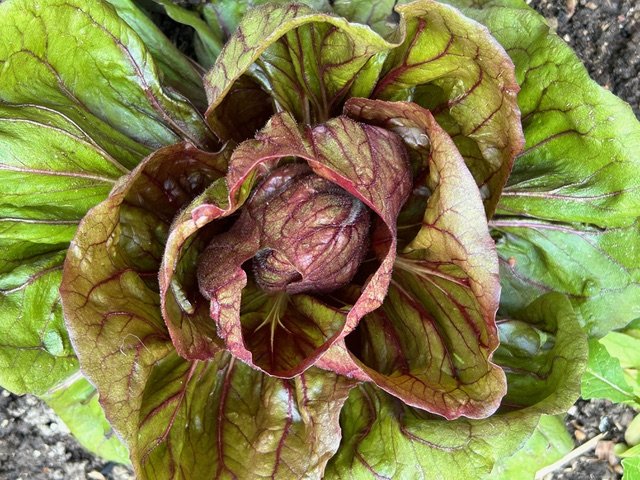


The diverse textures of tree bark or the shape of a just ripe fig or the intricate patterns of a head of radicchio can only be described as awe inspiring. Sometimes the beauty I witness seems like prayer.
Most of us have no idea what our food looks like when it is growing, budding, flowering, fruiting. Lettuce and chicory have incredibly intricate, delicate patterns. Lemons growing on the tree, are not the heavy fruits of their maturity: they begin as tiny graceful purple buds, then delicate fragrant white flowers and finally small green fruits with only a wisp of an idea of what they will become. Wheat and oats are grasses with enormous grace. There are 4000 varieties of potatoes, of all shapes and a rainbow of colors. Same with beans. Artichokes are the early petals of an outrageous pink flower. Many of our herbal medicines begin as showy flowers: echinacea, feverfew, mullein, Saint John’s wort, motherwort, elderberry…
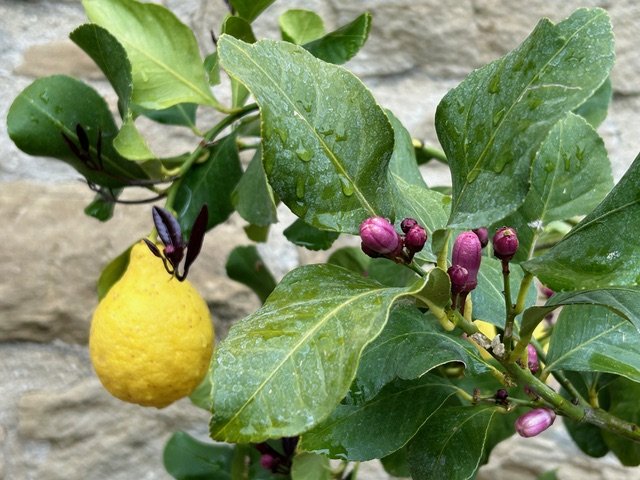
And I do grow flowers just for flowers sake. But I leave my flowers outdoors and enjoy their living beauty. Not purchasing cut flowers is a political act. The toxic environmental footprint and working conditions alone should be enough to discourage us from entering a florist or purchasing flowers at the grocers. And it is so much lovelier to see them alive and free. And not just the cultivated flowers. The wildflowers have their own outrageous beauty and design if you look closely.

We have colonized and enslaved the living world as we have our kin. We have taken our food and the prolific gifts from nature and we altered them until they are unrecognizable, ugly, unhealthy. There is no one-size-fits-all way to deal with the entangled mess we have made of our climate, our ecosystems and their biodiversity. We are willingly destroying our most important support. It leaves me furious. I take my rage outdoors where I give it to the earth. I dig a hole and plant my anger—along with a seed. The earth accepts it, transforming it to food and delight. The more rage I have, the more food and beauty I produce. No matter what the season, what the weather, taking sadness, hopelessness, anger into the middle of the living world, knowing it will be transformed, always becomes something positive. Life-affirming.

And I use this beauty to make converts of my visitors. People come as apprentices in a work/study exchange. I teach them the why and how of what I do. Whether they know it or not, they are hungry to reconnect with the natural world. I hook them first with the beauty. The pleasure of seeing all the growth and diversity and vitality thrills everyone. But over time, they find that it also sustains and centers them. Perhaps what we are missing, what we are desperately seeking, is being part of the wild and the beautiful. For milenia our ancestors lived in the trees, then on the savanah and later in the mountains. It is only in very recent human history that we cut down our homeland. We lost our support system, allowing ourselves to be swallowed into machines. And yet, we still crave the wild and beautiful. We are told to get out into nature as if it is something different from us, a resource to use. We crave green space and create parks and gardens, even lakes in the middle of our cities. Our zoos and acquariums are packed with awestruck children… adults too. Increasingly, we would rather stalk our food at an outdoor market than a shopping center. We spend our money at the florist recreating a jungle in our apartment.

Working on a small farm, with a large and diverse community of plants, is far less work and more secure than a heavy investment in one major crop with an enormous-weather dependent harvest. But more than that, it changes everything to move about outdoors, in all seasons, in beauty. I think the reason that gardeners and small-scale farmers have such passion about their calling is that their deepest needs are satisfied. I am calling it beauty but it is more than that. It is fullfilling a longing.
A bit like falling in love.
